

selected repertory.
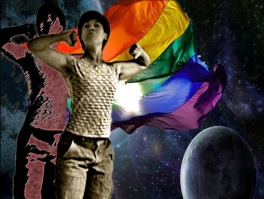 |
Super Ruwaxi: Origins
(2014) A live comic-book story in which Wu Ruwaxi, a nerdy Chinese-American teenager, discovers her super-identity as Super Ruwaxi, a feminist super-heroine whose magical body odor can overturn the course of patriarchal oppression. Created with Shyamala Moorty. Dramaturgy by Alison De La Cruz. Music by Derrick Spiva, Jr. and Ravindra Deo. |
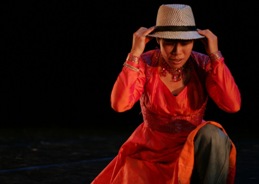 |
rapture/rupture (2013) The intimate and bittersweet rapture of poetic love-in-separation (viraha) is reinterpreted through cultural and gendered difference in this contemporary abhinaya (emotional expression) piece. Directed by Shyamala Moorty. Original music by Ravindra Deo. |
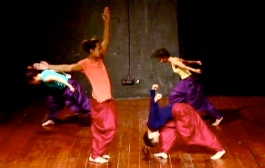 |
rubix
(2012) Playful and abstract, this improvisational quartet investigates resonances between the spatial geometry and ang of Indian classical dance and improvisational structures drawn from American postmodern dance. Inspired by Carol McDowell's surrender. |
 |
SUNOH!
Tell Me, Sister
(2011) An evening of multimedia storytelling and contemporary Indian dance theater that brings to life women’s stories of being silenced, finding voice, and the importance of sisterly community. Created with Shyamala Moorty with contributions from Anjali Tata and Sandra Chatterjee. Multimedia design by Carole Kim. Original music by Loren Nerell and Ravindra Deo. Dramaturgy by Mona Heinze. |
|
|
Learning to Walk Like Radha (2011) A talking dancer negotiates a really long piece of cloth while humorously commenting on the cultural collisions experienced as an American feminist attempting to learn kathak in Calcutta. |
 |
s k i n (2010) Inspired by the conflicted image of India's dancer-courtesan, words mysteriously mark and melt on the landscape of an eroticized yet vulnerable female body in this dance-for-camera work. Created in collaboration with Sangita Shresthova. |
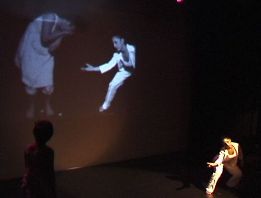 |
Unfinished Business
(2010) Inspired by the concept of reincarnation, this contemporary dance duet uses a time delay video capture technology to allow the performers to engage in movement confrontations with their past selves. Accompanied by an original musical score weaving together North Indian kathak rhythms, live percussion, and electronics. Choreographed in collaboration with Sheetal Gandhi. Music by Ellen Reid. Video manipulation by Jesse Gilbert. |
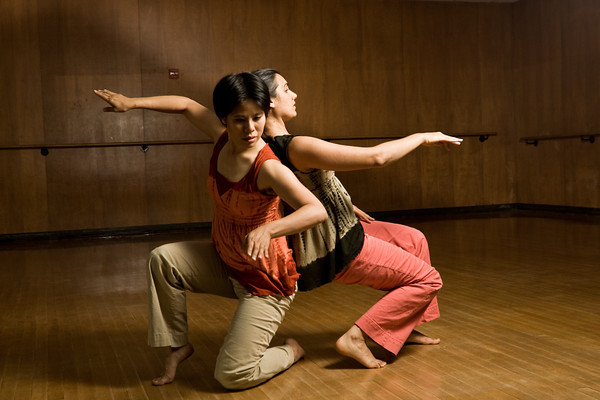 |
not two not one (2010) This duet collides classical kathak with contact improvisation to depict a relationship so intimate that it’s not always clear where one person starts and the other ends. Negotiating kathak’s exacting rhythms, the piece shifts between sensual connectedness, weight-sharing, and rough-and-tumble humor. Created in collaboration with Shyamala Moorty with original music by Paul Livingstone. |
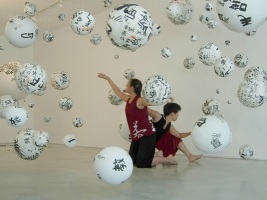 |
Compromised Interpretation (2009) In this site-specific, room-sized installation, dancers weave in and out of suspended spherical sculptures created from discarded Chinese calligraphy studies. Choreographed in collaboration with Shyamala Moorty. Sculptural installation by YaYa Chou. Original music by Loren Nerell.
|
|
|
Nine-Patch (2009) Veering between in-your-face funk, explosive extremes, and poignant gestures, a dancing trickster gleefully engages in cultural identity theft, shifting between different gendered characters while staying impeccably in time.Featuring original music by jazz/new music composer David Cutler based on traditional kathak rhythms.
|
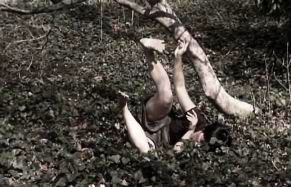 |
darshan (2009) This site-specific performance installation restages the encounter between performer and audience by drawing on the concept of “darshan” - a fluid, tactile, and reciprocal mode of seeing. Taking place in an outdoor natural setting, the work's source material ranges from butoh, to the orixás of the Afro-Brazilian religion Candomblé, to Indian classical abhinaya (emotional expression). To find out more, see the artbook documenting the performance. |
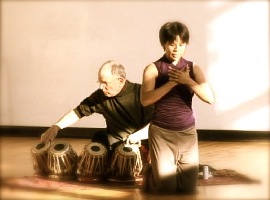 |
dreaming in taal (2009) Driven by unconventional cross-rhythms, this contemporary kathak piece infuses kathak vocabulary with a sinuous, intensely internal, dream-like quality. Created in collaboration with tabla player Lenny Seidman and pianist David Cutler. Supported by the Swarthmore Project and a Taipei Artist Village residency. |
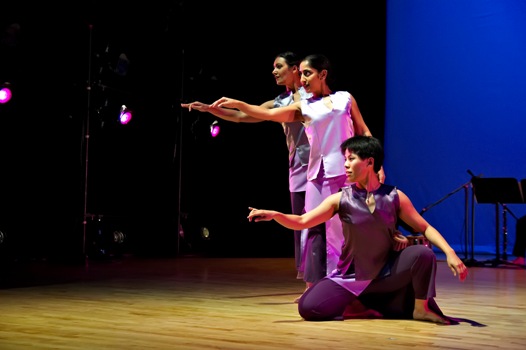 |
I longed to go back to the beginning… (2008) An investigation of sam in North Indian rhythmic tradition. Sam means "to conjoin or come together," and refers to the moment where the first and last beats of the metrical cycle merge, where musical tension is released and begins again, where union and loss coalesce. Original music composed by Ravindra Deo and Derrick Spiva, Jr. |
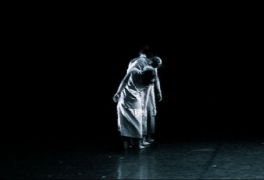 |
Falling Awake (2007) Moving between a quiet inner focus and jolting physicality, this trio draws upon contact improvisation, modern dance, and kathak to embody subtle and sudden shifts between sleeping and waking states. Composed in close relationship to David Cutler's dynamic music, Theme and 1,812 Variations. |
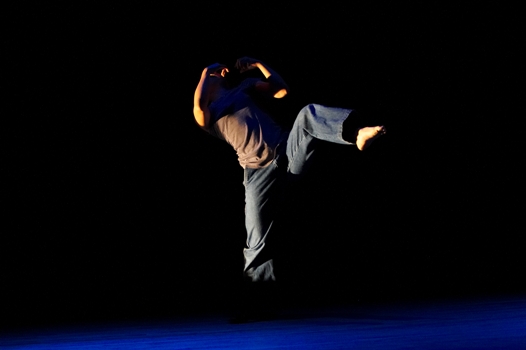 |
ruddha (rude, huh?) (2007) A solo of “false translations” of traditional kathak compositions, where North Indian rhythmic dance syllables transform into nonsensical English gossip, where idiosyncratic postmodern movement suddenly shifts into classical kathak. |
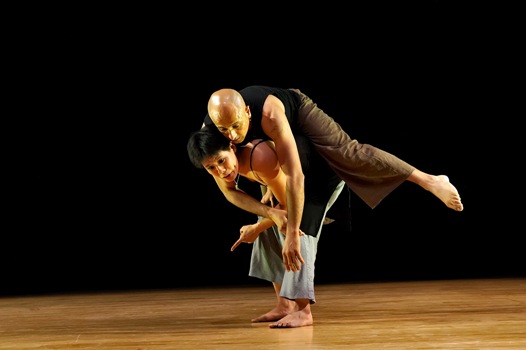 |
Meet me here, now – I’ll bring my then and there… (2007) How can two people with very different cultural histories (a Taiwanese-American and a Mexican immigrant) connect, collide, and listen to each other in the moment of improvisation? Created with José Reynoso. Accompanied by an artbook of writings and photographs from the rehearsal process, designed by visual artist Cristina Rosa. |
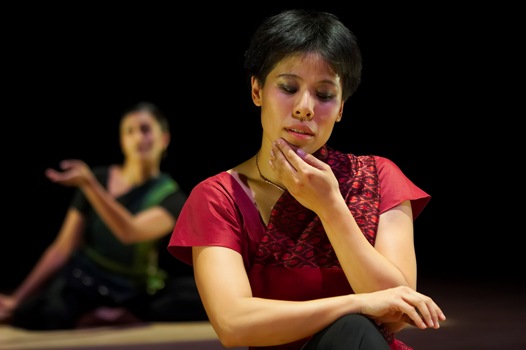 |
Counting the Moons (2006) A North and South Indian classical dancer collaborate to evoke love, loss, and the slippery relationships between self, friend, and lover, in this contemporary abhinaya (emotional expression) piece loosely inspired by a poem by the 17th century Telegu poet, Ksetrayya. Created in collaboration with Anusha Kedhar. |
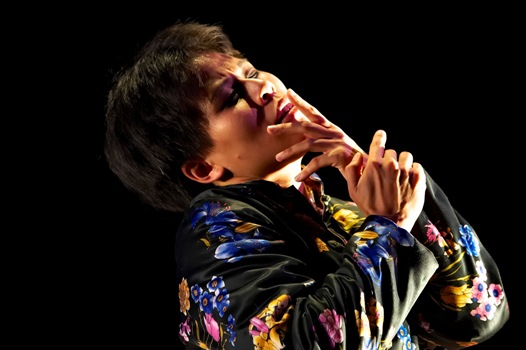 |
fish hook tongue (2005) A solo dance-theater piece that exposes the horrors and possibilities of bilingualism in the context of Taiwan’s history of linguistic colonization. Poetic storytelling, garbled soundscapes, and broken gestures evoke how a first generation American and her immigrant mother struggle with and express love for their mother tongue of Taiwanese. |
photo credits: Andrei Andreev, Michael Burr, YaYa Chou, Jorge Vismara